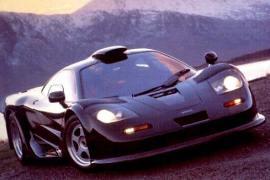MCLAREN F1 GT Models/Series Timeline, Specifications & Photos
First production year: 1997
Engines: Gasoline
Body style: Coupé (two-door)
Having won the 1995 24 Hours of LeMans but failing to repeat that success in 1996 and 1997, the British car manufacturer decided to improve its World Speed Record holder F1 and lined it up for the 1998 race.
Unfortunately for McLaren, in late 1997, the FIA decided to axe the GT1 class, so the car never met its actual competitors on the track. However, the British automaker created the mandatory three units to get the homologation number. Without them, it would have been impossible to race it there since the regulations stated clearly that at least one unit had to be produced and sold. The other two were just extras. Nevertheless, the iconic hypercar was created and represents a page in the automotive history book as one of the greatest inventions in the segment. Furthermore, it was so much ahead of any other supercar ever made that it received a new term: the hypercar. Its sibling, the 1989 XP5 (McLaren’s F1 prototype), achieved a speed record of 240.1 mph (386.5 kph) that stood for twelve years in the production car category. It was overthrown by the Bugatti Veyron twelve years later with its four-digit horsepower rating obtained from a quad-turbocharged W16 engine, while the McLaren had only a naturally aspirated V12. For the F1 GT, the car manufacturer extensively worked on the car. It redeveloped the bodywork, improved the engine, and upgraded the suspension. But all in vain: FIA had different plans.
Unlike its 1993 brother, the 1997 McLaren F1 GT had a more aggressive-looking front fascia. It featured a lower nose and sported a longer lip spoiler than the regular F1. Furthermore, the side scoops were rectangular, and there was no central air intake on the lower side of the bumper. Instead, the automaker placed a vent above it.
From its profile, the car shook with its long tail, which was needed to lower the drag resistance at the long straights from the LeMans race track. The curved greenhouse was adorned by an air intake, slightly taller than the one installed in the regular McLaren F1. At the back, the automaker replaced the massive rear window with two carbon fiber panels, which flanked the air duct that fed the engine with air. An integrated spoiler started from the rear quarter panels and was extended behind the vehicle. The entire rear fascia was redesigned and featured lower-mounted quad exhausts that flanked the diffuser.
The interior was finished in high-quality materials, with an Alcantara-covered dashboard and a two-tone design. As expected, it retained the three-seat layout, with the driver seated in the center of the cabin flanked by the other two, mounted in a recessed position. Even though the car was meant to be raced, it had to provide customers with some comfort, and using the best materials available was crucial. The car even featured air conditioning in addition to the small-sized opening for the side windows.
Behind the driver, in a mid-ship position, the automaker installed a revised version of the S70/2 V12 engine. BMW upgraded and increased its displacement to 6.1-liter instead of the 6.0-liter one from the existing McLaren F1. To comply with the race’s regulations, power was kept down to the same 627 PS (618 hp) and also increase the engine’s life. Alegedly, there were three units built: two were sold and the third one was owned by McLaren.
